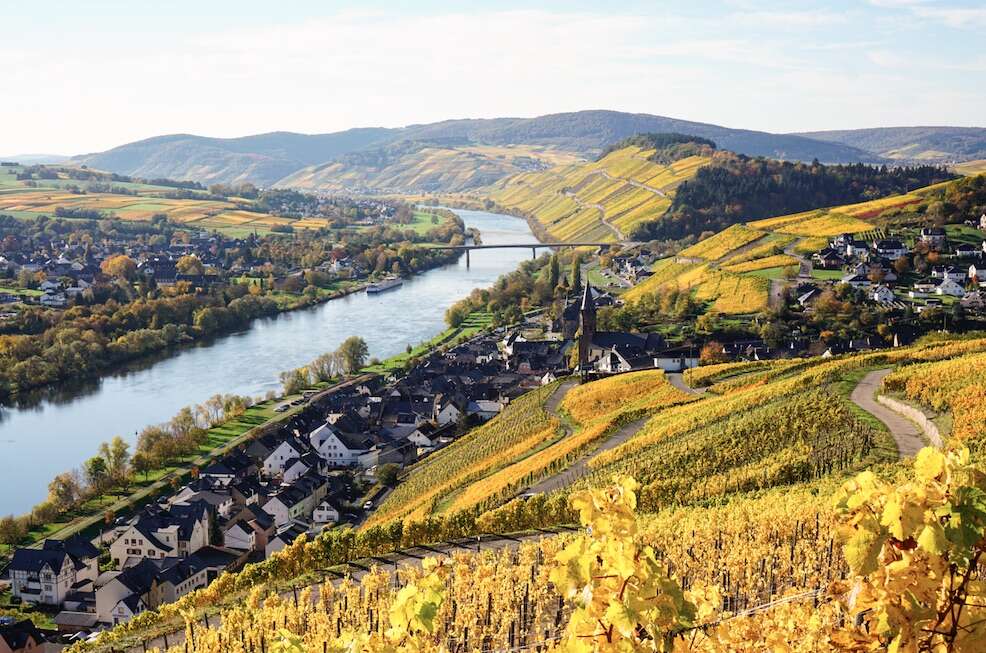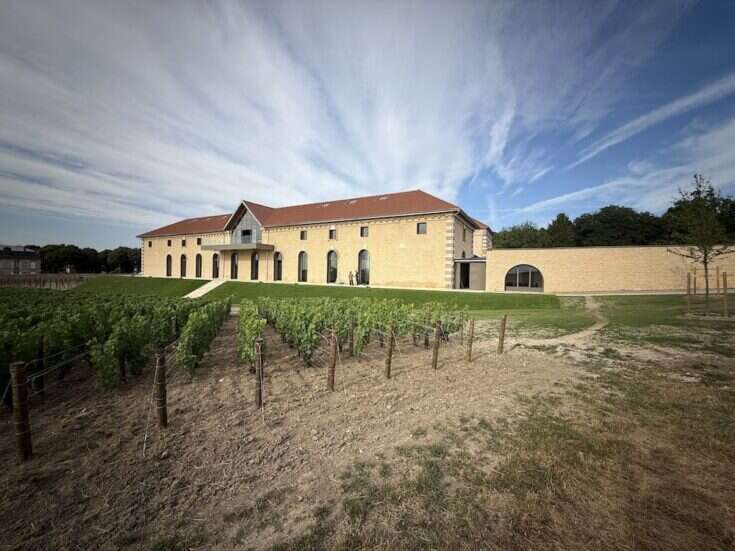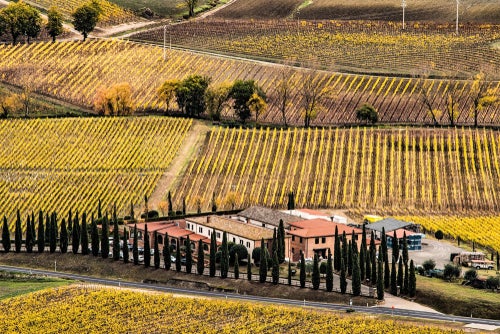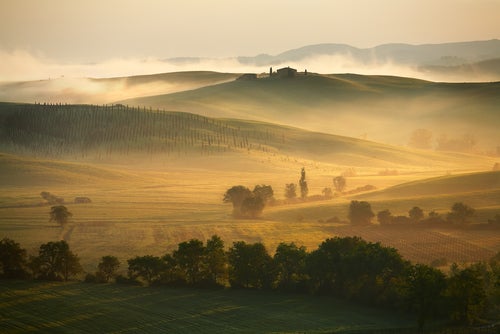
The second part of Terry Theise’s virtual pilgrimage to the Mosel’s Schloss Lieser includes a brush with perfection and some miraculous Auslesen.
2018 Niederberg Helden Riesling GG
(Full name, Lieserer Niederberg Helden Riesling Trocken)
Weinstein! (Tartrates.) You don’t see that much any more, especially in dry wines. Forcefully fragrant. Too much so? We’ll see as it warms in the glass. It has a roasted-corn note that’s as much Austrian as German. If you told me it was Gobelsburg’s Renner GV, I wouldn’t say “No! It can’t be.”
The wine seems to have a dozen beautiful things in it, and all of them feel exaggerated. What I don’t know is whether the wine is in an ungainly phase, or whether it’s just an ungainly wine. What’s lovely is that fine mirabelle fruit (which seems to be a signature of the site), and this is a highly positive association for me as I adore mirabelles. What’s unlovely is a scorched fragrance like if you looked away from the onions you were sweating and they started to burn.
Maybe among the various GGs the estate offers, this one’s better suited to residual sugar. That would be my infant hypothesis.
2018 has, I think a quite-particular fruit, and also perhaps a quite perishable one. I liked it out of the gate. Insofar as most Rieslings go through a weird phase, perhaps the big dry ‘18s are in their throes earlier than expected. I’ll report on my revisits.
On day 2 I sensed further deterioration. Again, I don’t draw any categorical conclusions from this. It seems more plausible to expect the vintage to emerge better, but I can’t say for sure.
2020 SL Riesling (Feinherb, on the back label)
Not just sponti here, but also a reduction. It only lasts for 10-15 seconds, but it’s a burpy bottle.
Okay, RS, not a lot of it. Let’s see. Theoretically this is my “happy-place” for Riesling. And the fructose influence is beneficial to the aromas. Yet the wine has an “in-between” feeling, as though the sweetness should have been less or more but not quite exactly where it is. That is to say I am tasting “sweetness”, and when RS is in balance, it vanishes.
For readers who don’t know, I have decades of tasting experience of dosage-blending, and one thing of which I am categorically sure is, when sweetness sticks out, there isn’t enough of it. It is battling against the other wine components. The perfect blend is seamless, and it always tastes DRIER than the wines that led up to it.
Don’t mistake me; this is a very good wine, especially from the Jancis glass, but the dry version is more wholesome and tranquil. We’ll see over the coming days whether my little fit of churl is warranted.
It is and it isn’t, depending on how closely you attend. The estate wishes the description Feinherb to denote a wine that isn’t too fruity, which is why they capped the RS where they have.
2020 Juffer Riesling (Feinherb on the back label) glug-glug-glug and ++
Fantastic aroma.
And leads to a perfect wine. Yah, sure, I have my issues with the word “perfect,” but what I mean here is “There is no way I’d want this wine to be different.” Feinherb? The sweetness is utterly submerged, whatever it is; you don’t perceive it at all.
And Juffer. That slightly unripe pear of a Riesling. That bite, that honesty. I’m sure there are Juffers with finesse and elegance—I know there are—but what I adore about them is their hearty muscularity and good humor. Juffer is DRINKY. Juffer takes the wheel when you’re too tired to drive. Your dog loves Juffer. (Juffer is your dog, your faithful companion…) But just when you’re thinking “got it, the wine is chummy,” there’s a wicked lick of ginger and vanilla-bean on the finish, and there’s more than meets the eye with this forthright guy.
I’m feeling nostalgic, because I remember this kind of wine from Alwin Karp (at Karp-Schreiber, whom I represented in my early days); chewy, right in the not-sweet sweet spot, Mosel mit muscle, and this wine has made me indecently happy.
2020 SL Riesling Kabinett
This is fine, salty, angular, tartly sweet, a little phenolic but also clinging and long. On the flowery side of things, but not a simple wine. Is there some Wehlener Sonnenuhr in the mix? It has the herbal flavors, the lime and sweet-fern and (even) summer savory but also the cool wash of blueberries. It’s not a wine of lofty design, but it’s awfully tasty in its slinky way.
Expect some fleeting reduction (from the screwcap) that dissipates in around a minute.
2020 Goldtröpfchen Riesling Kabinett
“Piesporter” appears on the back label.
Markedly peachy and passion-fruit aromas. The palate has a fine angularity missing from the dry version. It still isn’t “obviously firm” in contrast to other Mosels, but that’s not in its DNA (except maybe for Andreas Adam’s wines from those forbidding little terraces). The fancy-pants association would be “bergamot” while the plebian one is certainly “fresh-squeezed orange juice.”
There’s a lot of salty/sweet charm here, and while the wine is by no means simple it is simpler than its sibling Kabinetts. It also seems sweeter, but probably isn’t.
2020 Juffer Riesling Kabinett +
“Brauneberger” appears on the back label.
The estate appears to possess an accord with this site. I want to stand all the way up and yell.
It has “fine” notes atop the satisfying fleshiness of the feinherb. An exceedingly refined pear compote, maybe. Again the sweetness is absorbed into the fleshy fist of vinosity. There are other Grand Crus along the Mosel from which one can eke the nth-degree of intricacy, and that is a fine experience. This isn’t that experience. This is thirst, satisfied.
It’s as flinty as a Bernkasteler—not common from Juffer—speaking to the hewing and chiseling going on in this amazingly articulated being—yet this isn’t a cerebral syllogism of a wine; it’s a complex slug of Riesling you bite through even while you’re aware of all the jazz that’s happening inside it.
2020 Wehlener Sonnenuhr Riesling Kabinett
CORKED! Damn it.
2020 Niederberg Helden Riesling Kabinett
Lieserer appears on the back label.
This is my kinda Mosel—though it’s in an idiom similar to that of Willi Schaefer and dissimilar to an idiom along lines of Selbach-Oster or Loewen. (Except when Selbach takes a walk-on-the-wild-side and makes a stainless-steel wine….)
It’s sleek and lissome, animated and kinetic. It’s Cox’s Orange Pippins and mirabelles and white flowers, and also limes and Gyokoru (a Japanese green tea), it’s racy and rippling, with a fine stiff wind of freshness. There’s also a spiciness some Mosels show, and I must acknowledge it’s rather “on the sweet side” compared to the Juffer. At least it seems so. But that’s the affliction of (too) many modern Kabinetts, even in a cool-tasting year like ’20.
That Juffer is more food-like, while this one is at home in the patisserie. It’s also more fine-boned, almost dainty. But there are things embedded in here that suggest an unlikely arc of flavor may form over the days.
I’m seeing it on day 2, a green-tea grassiness I don’t expect to find below the many flowers and fruits. It’s not underripeness—far from it. It’s fresh-mown grass, and I really like it. What on earth accounts for it?
2020 Goldtröpfchen Riesling Spätlese +
Piesporter appears on the back label.
Alcohol at 7%, as all the Späts have, suggesting the adamant presence of sweetness. That is the zeitgeist in today’s Germany. But this Piesporter has the body to siphon away a lot of what could have been excessively overt residual sugar, and the wine presents as much savory as fruity.
By this point I was clearly somewhat wary of the Piesporters, but this wine seems cued-in, synched up with the vineyard in ways the other wines didn’t seem to be.
Sweetness? I’m sure it’s just as sweet as its sister-Späts, but there’s the sweetness you measure in the lab and the sweetness that lives among the other components of the wine, and while the upcoming Lieserer is (in my view) the better wine, this one has the better integration of its RS. And for all its richness it has a lift, a breeze-blown kite of freshness.
And also a solidity similar to the (upcoming) Juffer-Sonnenuhr though not quite as densely packed. Still, it’s wines like this where Piesport justifies itself as a Cru. Here we taste an undergirding intelligence below all the fawning fruit, something savory and toasty.
2020 Niederberg Helden Riesling Spätlese ++
Lieserer appears on the back label.
Highly refined fragrance leads into a brilliantly polished palate that is somehow both baroque and sleek. It is Spätlese as aesthetic object, and nothing the matter with that. Nor is there anything wrong with it being in a sugar shroud, especially with all the precision and spun webs of delicacy it also shows.
There’s some of the superripe pear we’ll also see in the Juffer-Sonenuhr, though the form is more filigree now. Some of that lacy detail is beneath a sucrose blanket, and I think we’ll need a couple decades to see into the soul of this beauty.
But soul it has. You get a glimpse of it on the back palate when the five-spice wash overtakes the sucrose echo, and then you sense a really fine delicate brush of botrytis and a fine candied-ginger sourness the wine needs, so that its sweetness isn’t merely “pretty.” Finally we have truly serious length here, and the finish of several minutes is worth its own study.
Day-2 seems to bring about a retreat of overt sweetness, and what is revealed is really rapturous. The wine has a kinship with Josephshöfer, in its equipoise of Domprobst spine and spice with Sonnenuhr’s dreamy blue fruit. There are also suggestions of the lower Nahe, and all in all I sense a grand future for this beauty.
2020 (Brauneberger) Juffer Sonnenuhr Riesling Spätlese ++
Exceedingly fine aroma as befits this supernal Grand Cru. If I say “pears and white flowers” it’s true (or “true”) but barely accounts for the ethereal gleam, that almost ghostly beauty that sends us chasing some diaphanous vision, a loss we’re still trying to process.
From a great estate you anticipate a certain elegance, a pure articulation, a dancing gleam of light and beauty at the edges of flavor; you expect it, and yet it surprises you. Each time. You can expect it all you want, but it always seems to crush you in pleasure. Beauty arriving in a disguise of something you couldn’t possibly have known. I’ve written elsewhere; it begins by erasing you.
I find myself, now, thinking also of Dönnhoff’s Kirschheck Spätlese, maybe not his “greatest” one but surely the most beloved. But let’s try to get concrete. What I most love about this infinitely loveable wine is the extent to which it is not so terribly sweet. Instead it seems to be carried along on a moony white backbone of slate, and what “sweetness” is brought along is a sort of ether of ginger and white peach and peach blossom. It feels like the wine is carried on a breeze of loving intelligence, as if it could heal you.
It is solid yet weightless, diaphanous yet determined, and it has the most perfect, seamless balance of sweetness of any wine thus far.
2020 (Brauneberger) Juffer-Sonnenuhr Riesling Auslese ++
I am wary of Auslese these days. Too many pimped-up sugar bombs. Too many over credulous lofty “scores.”
But oh boy, this wine is reassuring. The same guiding mind that made the Brauneberg feinherb and the Kabinett and the Spätlese so smartly seamless is again at work here. Auslese is rarely so deft, so drinkable, so articulate and yet also so mysterious. (And so transparent, literally; it has essentially no color at all….)
The gulf between the Spätlese and this is narrow but decisive. Too many Ausleses today feel like flaccid Beerenausleses, but this one is old-school; it’s a Spätlese that stretches up and up in order to grasp something it needs to reach. In concrete terms it is (usually) botrytis in some form, ideally not blatant, and it is also a form of flavor only possible by dessication. But too much of this, and dessication is all you taste. When it’s just-right all kinds of surprises happen. Here, we have a gloriously weird jolt of lemon grass and tarragon the Spätlese didn’t show. Where in the world is that from? And then there’s a subtle vegetality, the kind that appears at the edges of floral sweetness—we see it in Alishan oolongs (and it’s not my fault you don’t know these beautiful teas), and there’s hyssop and mints—but what impresses me most here is, it is clear that Haag wants Ausleses to be wines of concentration rather than liqueurs of dilution.
This wine is certainly interior enough to study, and it would justify any amount of meditation. Yet it is inescapably vinous, even while it leaves a lingering finish that wants to tell the story of every rock and flower it ever encountered.
2020 (Piesporter) Goldtröpfchen Riesling Auslese +
(Half-bottle; don’t know if this is the only bottling) Immediately shows the Piesport voodoo, the brown butter and maracuja aromas. Yet! On the palate it is firm and salty. It has mind, and knows how top speak it. Wouldn’t it be nice if there were a recoil from all these treacly Ausleses (and Spätleses, alas)? A wine like this is a model of how the thing should be.
It isn’t so simple with Piesport. The wines tend toward the bump-and-grind, fleshy, sometimes luridly so, and the “single-vineyard” Goldtröpfchen is—as insiders know all too well—much too large and distressingly heterogenous, such that there is an ocean of dross appearing under its name. But here we have something impeccable. And what is it, exactly?
It’s not like Andreas Adam’s wines, with their force and spice. It’s rather like a Platonic vision of the vineyard with all the vulgarity and mediocrity removed. Yup, it’s brown-butter and toasted corn and beeswax, and no it isn’t overtly slatey—at least not here—and certainly it is sweet, yet not obtrusively so, and I admit I have trouble fathoming how a wine like this exists at all. The “sweetness” is like trumpet mushrooms when they caramelize in the skillet.
2020 Niederberg Helden Riesling Auslese ++
2020 Niederberg Helden Riesling Auslese Goldkapsel ++
2019 Niederberg Helden Riesling Auslese Lange Goldkapsel ++
Lieser appears on the back labels.
You know the system, I’m sure. Different pickings vinified separately, set up in a sequence usually by must-weight but sometimes by flavor. Personally, I get the process and the idea makes sense, but I don’t always agree with the pecking order.
For example, I find the “regular” Auslese here to be close to perfect, or what I think of as perfect. It’s better than the Spätlese but not because it’s riper; it’s better because it has even more energy, more brilliance, a finer fruit, a raciness that’s hard to resist (and even to fathom)—and I haven’t had a wine this iridescently green since some of Loewen’s Thörnicher Ritsch. I won’t be surprised if you plunge the bottle in an ice bucket and the wine is bio-luminescent.
Imagine every green flavor, explicitly including anise-hyssop. Stop and think for a moment about the weird ways sweetness can engage within a wine, for this is certainly sweeter than its kid-brother Spät and yet it feels more savory and less sugar-driven.
What a wonderful achievement!

The GOLDKAPSEL has a hard act to follow. It is less green and more white, more fruit as-such. It’s a fine and superb fruit, celestial pears, a little like the Juffer-Sonnenuhr. Botrytis is discreet. It is a different type of wine, but it is also a sublime example of its type, and I am ever-harder to please with wines like these. But here, now, it’s this inexplicable equipoise of sun-on-grain with moon-on-frost; how does such a thing exist? On this world, at least?
I mean, <yawn>…. yes, botrytis, yes sugar yes concentration yes yes yes. But a wine like this can bring you back to pure beauty, no showing off, no whoring after “scores,” just trying to render some essence of a vineyard in what I would call a dignity of the sublime, as revealed by fruit. As such we enter a place that can seem abstract and bloodless compared to, say, one of Selbach’s en-bloc wines, but these things can coexist calmly and peacefully. Here we have a sort of grinning ghost unconcerned by earthly matters, while the rest of us strain to be faithful and mud-honest. Blessings upon us all.
Back on terra firma, meanwhile, here is another sweet wine that doesn’t make sweetness a blatant blast, but rather enfolds it into a divinely tuned chord.
Okay, now to the 2019. It is a great wine that feels just a teensy bit plausible after those iridescent ‘20s. I am a taster who responds at a molecular level to those high keening notes you feel in your fillings before you sniff them in your schnoz. I was made for ’20. I come to ’19 as an admiring foreigner.
That said, if I’m sitting with the Haags and Thomas says This is a kind of miracle for us, the wine we always seek to make, and here it is, I’m thinking yes, I understand that. I see it, I agree with it. I am tasting a perfect Auslese in a vintage of savor and salt and yellow fruits, and it is visibly and unambiguously magnificent. I doubt that ’20 will give any such monuments, and let’s not forget, monuments are another portal into the sublime.
Are you waiting for a “but?” I don’t have one. I know a great wine when I taste it. This is one such. But I have come to know what haunts me, and it lives more easily among those ‘20s than it does in this resplendent and gorgeous ’19.
The sustained level of these Auslesen can suggest something freed from weight, or even from gravity itself. They are angelic, shimmering and yet also precise and replete with craftsmanship, guided by a vision of a kind of beauty that can seem bloodless. I respond deeply to the ice-crystal divinity such wines can embody, and I emerged from them grateful and amazed. But I also heard myself ask the question, what do we do with wines like these?
If we can simply open a bottle one afternoon, and drink it slowly, absorbed and dreaming, then yes, those will be sublime moments with a wine as a bringer of reverie. But do we carve out those hours? Or if we gather a few like-minded friends and have some dinner and afterwards we bring out a few wines like these, and we let them solo for us while we attend in happiness and amazement, that would be a proper tribute to such achievement and such loveliness. But do we carve out such hours?
I don’t want wines like these to be mere creatures-of-the-tasting room.
I don’t want the furniture to be so exquisite that no one ever sits on it.
But I don’t think we can square the circle of the sublime with the utilitarian. Maybe the question of how wines like these are used, sensually, is irrelevant. What follows, then, is the need to make space for the divine in our lives, ideally with some regularity. Otherwise the bottles lie in the cellar while you wonder how and when you’ll ever drink them.
I asked, what do we do with wines like these. Is it a better question, what do wines like these do with us?






